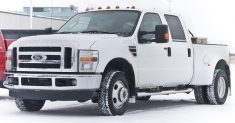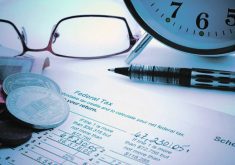Do you need a large tax deduction before year-end? You may be able to immediate expense (100 percent write-off in the year of purchase) up to $1.5 million of equipment purchases.
For corporations, immediate expensing ends Dec. 31, 2023, and the equipment must be available for use by Dec. 31. The Canada Revenue Agency defines this as “the time the property is delivered or made available to you and is capable of producing a saleable product or service”.
Making a deposit or payment at the dealership on Dec. 31 without having the equipment available for use doesn’t qualify as a 2023 purchase for tax purposes.
Read Also

Kochia has become a significant problem for Prairie farmers
As you travel through southern Saskatchewan and Alberta, particularly in areas challenged by dry growing conditions, the magnitude of the kochia problem is easy to see.
Immediate expensing started in April 2021 to temporarily stimulate the economy through the pandemic. Originally, only corporations could immediately expense equipment. This was expanded to unincorporated businesses and partnerships for equipment ready for use starting January 2022.
Because unincorporated businesses and partnerships missed out on immediate expensing in 2021, they get an extra year. They qualify for immediate expensing on equipment purchased by Dec. 31, 2024. Associated businesses, including corporations, unincorporated businesses and partnerships, have to share the $1.5 million yearly limit between the businesses in the group.
Most farm equipment qualifies, but capital cost allowance (CCA) classes 1 and 6 (buildings and bins) and class 14.1 (quota) do not qualify. If you buy and sell the same equipment in the year, or buy equipment from a related party, you cannot immediate expense them in most cases. However, if you trade in a piece of equipment, the full gross purchase price is eligible for immediate expensing.
Farmers often lease to get a faster tax deduction. With immediate expensing, buying the equipment results in a 100 percent deduction for the entire purchase, which is much faster than leasing. Leasing equipment could make sense for non-tax factors such as ease of financing, and in an operating lease, the farmer doesn’t hold the downside risk if equipment prices decline.
Because shops and bins can’t be immediately expensed, leasing does result in a faster tax write-off. Purchased Class 6 shops and bins are 15 percent deductible in the first year and then deductible on a 10 percent declining balance rate after that. A $100,000 purchase will generate a $15,000 deduction the first year, and then an $8,500 deduction in the second year.
Because leasing generally has higher interest rates, this additional interest cost needs to be weighed against the faster tax deduction. For example, in December 2023 year-ends, corporations in Saskatchewan that have the small business deduction available pay tax at a 9.5 percent rate. If you have the cash available to pay for the purchase outright, leasing at an interest rate of 10 percent just to save 9.5 percent tax doesn’t make sense. However, if you are going to finance the purchase anyway, the additional interest cost isn’t as large.
Once immediate expensing is no longer available, we go back to the previous accelerated investment incentive CCA, which allows for one-and-a-half times the regular CCA rate for the net additions in the first year.
For Class 10 self-propelled equipment and vehicles, such as combines and tractors, the normal CCA rate is 30 percent. With the accelerated investment incentive, 45 percent is deductible in the first year. A $100,000 purchase would generate a $45,000 deduction in the first year and a $16,500 deduction in the second year. You can still generate large deductions under these rules.
For Class 8 equipment, such as air seeders and balers, the normal CCA rate is 20 percent, with 30 percent deductible in the first year. A $100,000 purchase would generate a $30,000 deduction in the first year and a $14,000 deduction in the second year.
Immediate expensing and CCA are optional deductions from the CRA’s perspective. A large deduction now means less deductions in the future. It doesn’t make sense to save tax now at lower rates, only to pay tax at higher rates in the next few years. If your equipment is fully expensed, the proceeds will likely result in taxable income when you start selling equipment.
For profitable corporations, maximizing the use of the small business deduction for the first $500,000 of taxable income is effective tax planning. Immediate expensing deductions may save tax at a 9.5 percent Saskatchewan corporate rate now, only to have more taxable income in future years taxed at 27 percent. This is especially important for farmers considering winding down operations or having a sale in the next five to 10 years.
For farming operations, we typically recommend immediate expensing equipment, and then using the optional inventory adjustment. This allows a farming business to prepay tax on inventory on hand at year-end, with an offsetting deduction for the same amount in the following tax year. This gives more flexibility to sell inventory faster, and the cash can be used to pay down debt or buy equipment outright rather than acquiring new high interest rate debt.
If you need a large tax deduction this year, we recommend discussing the tax implications with your accountant before claiming a $1.5 million immediate expensing deduction.
Levi Derksen, CPA, CGA, is a senior manager in the Ag Team at Buckberger Baerg & Partners LLP in Saskatoon.

















